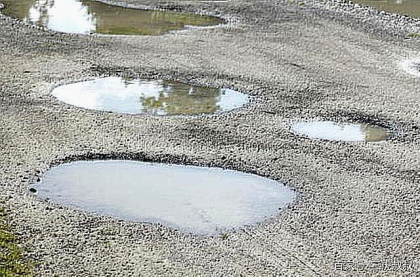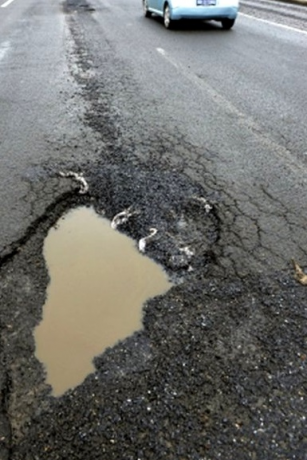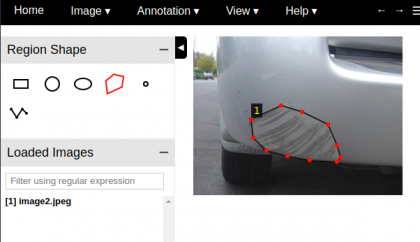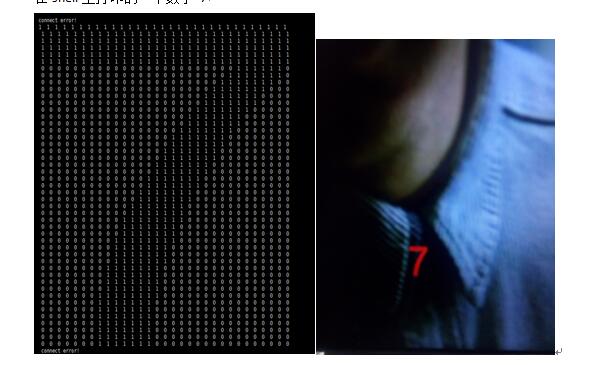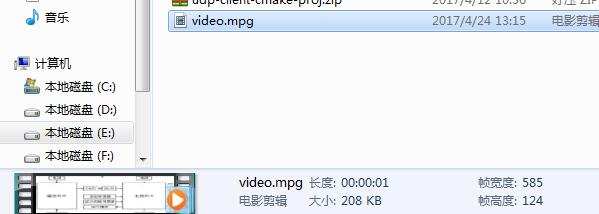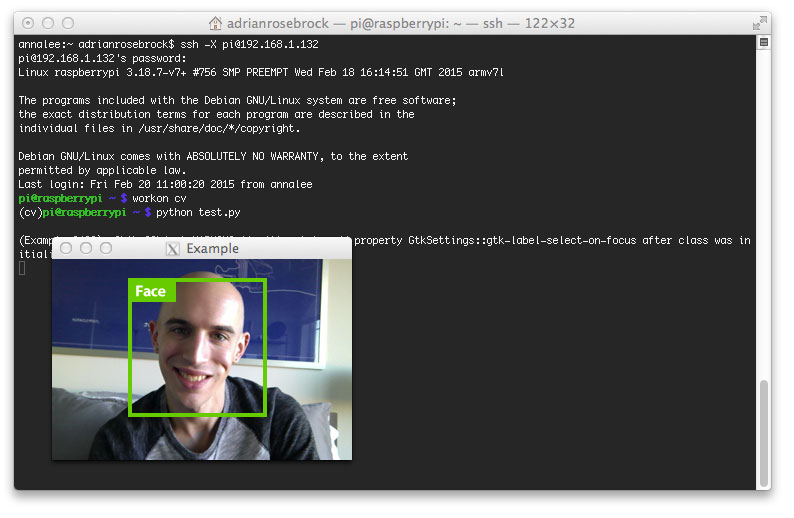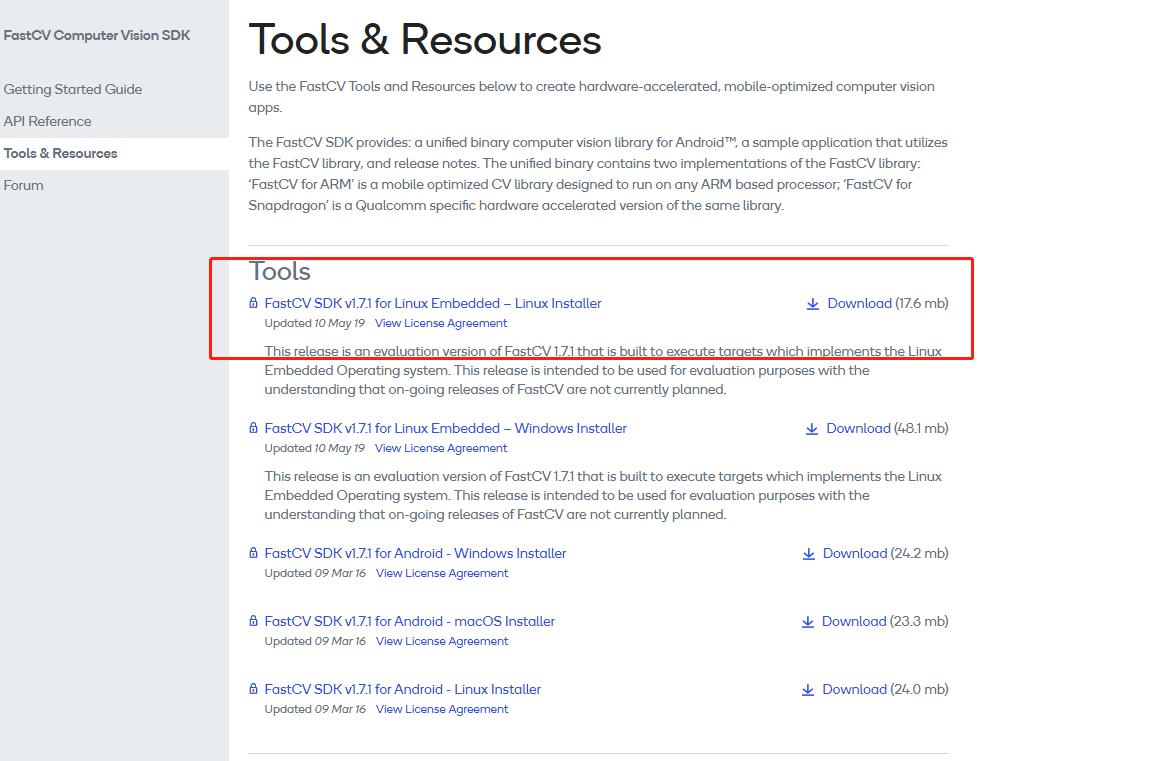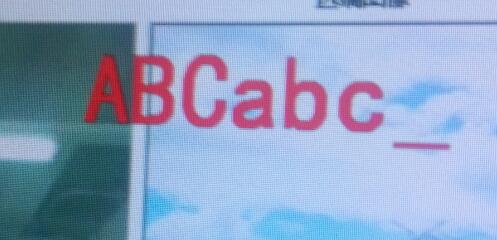matterport MASKRCNN识别水坑
MASKRCNN识别水坑并标记出mask 蒙版来,然后让机器人在行驶过程中避免进入水坑,对于某些特殊场景,专门检测水坑
并避免驶入也是非常重要的。
文章的内容是构建一个自定义的 Mask R-CNN 模型,该模型可以检测道路上水坑区域(参见 图像示例)。实际上可以利用图像分割做好多事情,如果机器人在行驶的过程中有针对性的检测水坑然后绕过水坑行驶,以免水坑太深没过机器人。
目录
-
如何构建用于道路水坑的 Mask R-CNN
- 收集数据
- 注释数据
- 训练模型
- 验证模型
- 运行图像模型并进行预测
- 感谢
如何构建用于道路水坑检测的 Mask R-CNN 模型
为了构建自定义 Mask R-CNN,我们将利用 Matterport Github ,地址 https://github.com/matterport/Mask_RCNN
MASKRCNN的搭建具有一定的挑战,请按照GitHub上的说明进行搭建。MASK RCNN 是基于TensorFlow 的python3版本。 还好最终搭建成功Mask R-CNN 。
收集数据
在这个练习中,我从百度收集了 66 张水坑图像(然后经过图像镜像,颠倒,旋转角度等处理增加到120张。查看下面的一些示例。
注释数据
Mask R-CNN 模型要求用户注释图像并识别水坑区域。本教程使用的注释工具依旧是 VGG Image Annotator — v 1.0.6。您可以使用此链接 :http://www.robots.ox.ac.uk/~vgg/software/via/via-1.0.6.html 提供的 html 版本 。使用此工具,您可以创建多边形遮罩,如下所示:
创建完所有注释后,您可以下载注释并将其保存为json格式。这里不同于LABELME的是 只生成一个json文本。
训练模型
训练的python源码参考balloon.py修改的。训练中用到了 coco的H5模型。
训练指令
python3 custom_cardamage.py train --dataset=customImages/ --weights=coco
我正在使用 CPU 并在 100个steps 10个epoches需要花费14个小时,建议有条件的用GPU。
water.py
"""
Mask R-CNN
Train on the toy Balloon dataset and implement color splash effect.
Copyright (c) 2018 Matterport, Inc.
Licensed under the MIT License (see LICENSE for details)
Written by Waleed Abdulla
------------------------------------------------------------
Usage: import the module (see Jupyter notebooks for examples), or run from
the command line as such:
# Train a new model starting from pre-trained COCO weights
python3 balloon.py train --dataset=/path/to/balloon/dataset --weights=coco
# Resume training a model that you had trained earlier
python3 balloon.py train --dataset=/path/to/balloon/dataset --weights=last
# Train a new model starting from ImageNet weights
python3 balloon.py train --dataset=/path/to/balloon/dataset --weights=imagenet
# Apply color splash to an image
python3 balloon.py splash --weights=/path/to/weights/file.h5 --image=<URL or path to file>
# Apply color splash to video using the last weights you trained
python3 balloon.py splash --weights=last --video=<URL or path to file>
"""
import os
import sys
import json
import datetime
import numpy as np
import skimage.draw
import cv2
from mrcnn import visualize
from mrcnn.visualize import display_instances
import matplotlib.pyplot as plt
# Root directory of the project
ROOT_DIR = os.getcwd()
# Import Mask RCNN
sys.path.append(ROOT_DIR) # To find local version of the library
from mrcnn.config import Config
from mrcnn import model as modellib, utils
# Path to trained weights file
COCO_WEIGHTS_PATH = os.path.join(ROOT_DIR, "mask_rcnn_coco.h5")
# Directory to save logs and model checkpoints, if not provided
# through the command line argument --logs
DEFAULT_LOGS_DIR = os.path.join(ROOT_DIR, "logs")
############################################################
# Configurations
############################################################
class CustomConfig(Config):
"""Configuration for training on the toy dataset.
Derives from the base Config class and overrides some values.
"""
# Give the configuration a recognizable name
NAME = "water"
# We use a GPU with 12GB memory, which can fit two images.
# Adjust down if you use a smaller GPU.
IMAGES_PER_GPU = 1
BACKBONE = "resnet50"
# Number of classes (including background)
NUM_CLASSES = 1 + 1 # Background + toy
RPN_ANCHOR_SCALES = (8*5, 16*5, 32*5, 64*5, 128*5) # anchor side in pixels
# Number of training steps per epoch
STEPS_PER_EPOCH = 100
# Skip detections with < 90% confidence
DETECTION_MIN_CONFIDENCE = 0.95
DETECTION_NMS_THRESHOLD = 0.2
############################################################
# Dataset
############################################################
class CustomDataset(utils.Dataset):
def load_custom(self, dataset_dir, subset):
"""Load a subset of the Balloon dataset.
dataset_dir: Root directory of the dataset.
subset: Subset to load: train or val
"""
# Add classes. We have only one class to add.
self.add_class("water", 1, "water")
# Train or validation dataset?
assert subset in ["train", "val"]
dataset_dir = os.path.join(dataset_dir, subset)
# Load annotations
# VGG Image Annotator saves each image in the form:
# { 'filename': '28503151_5b5b7ec140_b.jpg',
# 'regions': {
# '0': {
# 'region_attributes': {},
# 'shape_attributes': {
# 'all_points_x': [...],
# 'all_points_y': [...],
# 'name': 'polygon'}},
# ... more regions ...
# },
# 'size': 100202
# }
# We mostly care about the x and y coordinates of each region
annotations1 = json.load(open(os.path.join(dataset_dir, "via_region_data.json")))
# print(annotations1)
annotations = list(annotations1.values()) # don't need the dict keys
# The VIA tool saves images in the JSON even if they don't have any
# annotations. Skip unannotated images.
annotations = [a for a in annotations if a['regions']]
# Add images
for a in annotations:
# print(a)
# Get the x, y coordinaets of points of the polygons that make up
# the outline of each object instance. There are stores in the
# shape_attributes (see json format above)
polygons = [r['shape_attributes'] for r in a['regions'].values()]
# load_mask() needs the image size to convert polygons to masks.
# Unfortunately, VIA doesn't include it in JSON, so we must read
# the image. This is only managable since the dataset is tiny.
image_path = os.path.join(dataset_dir, a['filename'])
image = skimage.io.imread(image_path)
height, width = image.shape[:2]
self.add_image(
"water", ## for a single class just add the name here
image_id=a['filename'], # use file name as a unique image id
path=image_path,
width=width, height=height,
polygons=polygons)
def load_mask(self, image_id):
"""Generate instance masks for an image.
Returns:
masks: A bool array of shape [height, width, instance count] with
one mask per instance.
class_ids: a 1D array of class IDs of the instance masks.
"""
# If not a balloon dataset image, delegate to parent class.
image_info = self.image_info[image_id]
if image_info["source"] != "water":
return super(self.__class__, self).load_mask(image_id)
# Convert polygons to a bitmap mask of shape
# [height, width, instance_count]
info = self.image_info[image_id]
mask = np.zeros([info["height"], info["width"], len(info["polygons"])],
dtype=np.uint8)
for i, p in enumerate(info["polygons"]):
# Get indexes of pixels inside the polygon and set them to 1
rr, cc = skimage.draw.polygon(p['all_points_y'], p['all_points_x'])
mask[rr, cc, i] = 1
# Return mask, and array of class IDs of each instance. Since we have
# one class ID only, we return an array of 1s
return mask.astype(np.bool), np.ones([mask.shape[-1]], dtype=np.int32)
def image_reference(self, image_id):
"""Return the path of the image."""
info = self.image_info[image_id]
if info["source"] == "water":
return info["path"]
else:
super(self.__class__, self).image_reference(image_id)
def train(model):
"""Train the model."""
# Training dataset.
dataset_train = CustomDataset()
dataset_train.load_custom(args.dataset, "train")
dataset_train.prepare()
# Validation dataset
dataset_val = CustomDataset()
dataset_val.load_custom(args.dataset, "val")
dataset_val.prepare()
# *** This training schedule is an example. Update to your needs ***
# Since we're using a very small dataset, and starting from
# COCO trained weights, we don't need to train too long. Also,
# no need to train all layers, just the heads should do it.
print("Training network heads")
model.train(dataset_train, dataset_val,
learning_rate=config.LEARNING_RATE,
epochs=10,
layers='heads')
def color_splash(image, masks,N):
"""Apply color splash effect.
image: RGB image [height, width, 3]
mask: instance segmentation mask [height, width, instance count]
Returns result image.
"""
# Make a grayscale copy of the image. The grayscale copy still
# has 3 RGB channels, though.
gray = skimage.color.gray2rgb(skimage.color.rgb2gray(image)) * 255
# We're treating all instances as one, so collapse the mask into one layer
mask = (np.sum(masks, -1, keepdims=True) >= 1)
#rgb red color
color = (1.0,0.0,0.0)
'''
# Copy color pixels from the original color image where mask is set
if mask.shape[0] > 0:
splash = np.where(mask, (128,0,0), gray).astype(np.uint8)
else:
splash = gray
'''
masked_image = image.astype(np.uint32).copy()
for i in range(N):
mask = masks[:, :, i]
splash = visualize.apply_mask(gray, mask,color)
#splash.astype(np.uint8)
return splash
def detect_and_color_splash(model, image_path=None, video_path=None):
assert image_path or video_path
# Image or video?
if image_path:
# Run model detection and generate the color splash effect
print("Running on {}".format(args.image))
# Read image
image = skimage.io.imread(args.image)
# Detect objects
r = model.detect([image], verbose=1)[0]
# Number of instances
N = r['rois'].shape[0]
print("\n*** instances to display :",N)
if N > 0:
# Color splash
splash = color_splash(image, r['masks'],N)
# Save output
file_name = "result/splash_{:%Y%m%dT%H%M%S}.png".format(datetime.datetime.now())
skimage.io.imsave(file_name, splash)
print("Saved to ", file_name)
elif video_path:
import cv2
# Video capture
vcapture = cv2.VideoCapture(video_path)
width = int(vcapture.get(cv2.CAP_PROP_FRAME_WIDTH))
height = int(vcapture.get(cv2.CAP_PROP_FRAME_HEIGHT))
fps = vcapture.get(cv2.CAP_PROP_FPS)
# Define codec and create video writer
file_name = "splash_{:%Y%m%dT%H%M%S}.avi".format(datetime.datetime.now())
vwriter = cv2.VideoWriter(file_name,
cv2.VideoWriter_fourcc(*'MJPG'),
fps, (width, height))
count = 0
success = True
while success:
print("frame: ", count)
# Read next image
success, image = vcapture.read()
if success:
# OpenCV returns images as BGR, convert to RGB
image = image[..., ::-1]
# Detect objects
r = model.detect([image], verbose=0)[0]
# Color splash
splash = color_splash(image, r['masks'])
# RGB -> BGR to save image to video
splash = splash[..., ::-1]
# Add image to video writer
vwriter.write(splash)
count += 1
vwriter.release()
print("Saved to ", file_name)
############################################################
# Training
############################################################
if __name__ == '__main__':
import argparse
# Parse command line arguments
parser = argparse.ArgumentParser(
description='Train Mask R-CNN to detect custom class.')
parser.add_argument("command",
metavar="<command>",
help="'train' or 'splash'")
parser.add_argument('--dataset', required=False,
metavar="/path/to/custom/dataset/",
help='Directory of the custom dataset')
parser.add_argument('--weights', required=True,
metavar="/path/to/weights.h5",
help="Path to weights .h5 file or 'coco'")
parser.add_argument('--logs', required=False,
default=DEFAULT_LOGS_DIR,
metavar="/path/to/logs/",
help='Logs and checkpoints directory (default=logs/)')
parser.add_argument('--image', required=False,
metavar="path or URL to image",
help='Image to apply the color splash effect on')
parser.add_argument('--video', required=False,
metavar="path or URL to video",
help='Video to apply the color splash effect on')
args = parser.parse_args()
# Validate arguments
if args.command == "train":
assert args.dataset, "Argument --dataset is required for training"
elif args.command == "splash":
assert args.image or args.video,\
"Provide --image or --video to apply color splash"
print("Weights: ", args.weights)
print("Dataset: ", args.dataset)
print("Logs: ", args.logs)
# Configurations
if args.command == "train":
config = CustomConfig()
else:
class InferenceConfig(CustomConfig):
# Set batch size to 1 since we'll be running inference on
# one image at a time. Batch size = GPU_COUNT * IMAGES_PER_GPU
GPU_COUNT = 1
IMAGES_PER_GPU = 1
config = InferenceConfig()
config.display()
# Create model
if args.command == "train":
model = modellib.MaskRCNN(mode="training", config=config,
model_dir=args.logs)
else:
model = modellib.MaskRCNN(mode="inference", config=config,
model_dir=args.logs)
# Select weights file to load
if args.weights.lower() == "coco":
weights_path = COCO_WEIGHTS_PATH
# Download weights file
if not os.path.exists(weights_path):
utils.download_trained_weights(weights_path)
elif args.weights.lower() == "last":
# Find last trained weights
weights_path = model.find_last()[1]
elif args.weights.lower() == "imagenet":
# Start from ImageNet trained weights
weights_path = model.get_imagenet_weights()
else:
weights_path = args.weights
# Load weights
print("Loading weights ", weights_path)
if args.weights.lower() == "coco":
# Exclude the last layers because they require a matching
# number of classes
model.load_weights(weights_path, by_name=True, exclude=[
"mrcnn_class_logits", "mrcnn_bbox_fc",
"mrcnn_bbox", "mrcnn_mask"])
else:
model.load_weights(weights_path, by_name=True)
# Train or evaluate
if args.command == "train":
train(model)
elif args.command == "splash":
detect_and_color_splash(model, image_path=args.image,
video_path=args.video)
else:
print("'{}' is not recognized. "
"Use 'train' or 'splash'".format(args.command))
在图像上运行模型并进行预测
custom_train.py 中的color_spash内容我们做了修改,所有的实例instance 都用同一种颜色mask处理。
预测指令:
python3 custom_cardamage.py splash --image=customImages/test/bitauto.jpg --weights=mask_rcnn_damage_0010.h5
预测有一定的误差和丢失。也许可以通过加大训练集增加准确率。
感谢
非常感谢 Matterport 在GitHub上开放的源码,同时也感谢priya 分享的详细博客https://www.analyticsvidhya.com/blog/2018/07/building-mask-r-cnn-model-detecting-damage-cars-python/ 。


